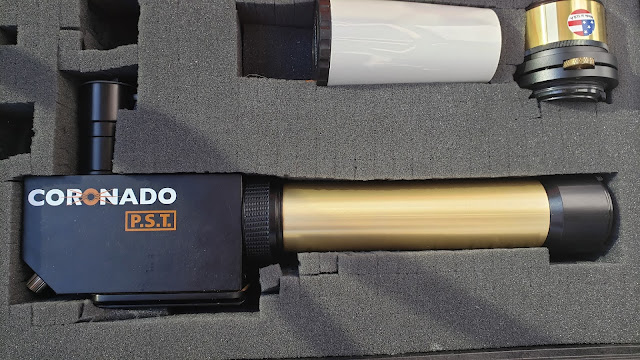I want to be able to log my readings with my telescope for future reference. After reading some other blogs and websites, I thought that my computer might be able to record the output from the Satellite Finder using the headset jack on my laptop.
I popped the back off my Satellite Finder to see what I was dealing with. It came off really easily as it held in just with friction. A bit of a squeeze and something to pop in the back and it came right off.
 |
| Inside my Satellite Finder |
I wanted to measure the power used to drive the needle deflection on the meter. I didn't want to put too much power into my laptop and damage it. I also wanted to see what type of power it uses, whether it is DC or AC. If it is DC, I will not be able to use my laptop headset jack to log my results, as it needs an AC signal in order to work. Most audio cards in computers have a capacitor in series with the inputs and outputs on the card. This would block the DC, so I couldn't record any results.
I put my meter across the two terminals of the meter movement.
 |
| Where I put my meter leads. |
I then powered up the meter and adjusted the knob on the front to measure the voltage from a zero reading to a full scale reading. Not too surprising that my meter measured zero volts at zero meter deflection.
 |
| Zero reading. |
I then turned the knob and measured voltage at full scale. I found that the meter uses DC, and takes about 0.6V to read full scale. The good news is that the amount of voltage would be safe for my computer, the bad news is that it is DC voltage, so I cannot record it using my headset jack on my laptop. I will have to think of something else.
 |
| Almost full scale deflection reading. |





Comments
Post a Comment